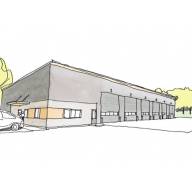By Chach Curtis
Although many of these questions about Waitsfield’s proposed wastewater system have been asked and answered, I want to clarify some answers for those who’ve missed the discussion. Also, folks can visit the town website for a recording of the meeting and a copy of the presentation. (https://www.waitsfieldvt.gov/departments/projects/wastewater).
What is the project?
The proposed community wastewater system will collect waste from households and businesses in Waitsfield Village and Irasville. The waste will be piped to storage/pump stations along Route 100, where most solids will settle in storage tanks. The remaining effluent will be pumped through a conveyance pipe along Route 100 to the Munn field, where it will be processed in an advanced treatment plant before discharge to a large leach field.
The proposed Sequencing Batch Reactor (SBR) treatment system uses a naturally occurring, biological process to speed up decomposition and remove nitrogen and phosphorus. There are over a dozen similar SBR systems operating in Vermont, including one right next door at Sugarbush. Others include Northfield, Randolph, Plainfield, Middlebury, and Stowe.
Are there flood risks at the treatment site?
While the Mad River borders the western edge of the Munn site, the treatment plant and leach field are located 60 feet above the Mad River and set back 600 feet. The site is 35 feet above the 100-year flood plain, with a huge rock ledge creating a natural barrier between the flood plain and the leach field. The site is well protected from the Mad River, and the Mad River is well protected from the treatment site.
The treatment site is also resilient to flooding from heavy rains. Per state law, the actual capacity of the leach field is double the planned flow of 90,000 gallons per day. This extra capacity provides protection from extreme weather. No storm drains will be connected to the collection system, so there is no risk of stormwater infiltration causing overflow at the treatment plant. Storage tanks are built to last 50-plus years. All controls and other equipment will be housed inside a building with continuous monitoring, spare parts on hand, and a backup power supply. Other Vermont sites with the same technology operated safely through recent floods, and this one will too.
Regarding illegal discharge to state waters, I am more concerned about the risk posed by aging private septic systems located in the flood plain. We have over 40 such systems in Irasville and Waitsfield Village. Wouldn’t you rather control that risk at one modern, continuously monitored treatment site well above the 100-year flood plain, as opposed to 40-plus old sites sitting directly in the flood plain?
Are chemicals used in treatment
The proposed treatment system relies on a biological process, so the use of chemicals is minimal. The system would use the chemicals listed below. None of these chemicals are considered hazardous by OSHA, but all can be harmful if inhaled, swallowed, or in direct contact with skin and eyes (GHS Health Hazard symbol and/or ). They would be delivered by truck in polyethylene drums and stored in a walled enclosure within the building, with secondary containment measures in the event of a spill.
- Calcium nitrate to reduce corrosion in pumps and other equipment. Also sold over the counter at garden stores as a plant fertilizer.
- Carbon additive to maintain biological process in batch reactors. Made from organic materials like cellulose, in use at 550 wastewater treatment plants in North America.
- Magnesium hydroxide to control alkalinity/pH in SBR tanks. Also sold over the counter as antacid tablets like Milk of Magnesia.
- Poly aluminum chloride (PAC) or other forms of metal salt, a binding agent used to remove dissolved solids in the SBR tanks. Similar composition as road salt; also used in water treatment systems. Solids bind to the PAC and both precipitate out into the sludge tank, not the leach field.
The proposed wastewater system is safe and reliable, and it will better protect our public and environmental health than the many aging private leach fields in the Mad River flood plain.
If we act now, the proposed system will also be affordable with no impact on the municipal tax rate. We have a rare opportunity to cover over 85% of the cost with federal and state grants. We can access long-term loans for the balance, to be paid back by monthly user fees just like the municipal water system. To learn more in advance of the June 11 bond vote, visit the town website (https://www.waitsfieldvt.gov/departments/projects/wastewater), or meet the project team at the following events:
- Coffee hour Q&A at Three Mountain Café, Fridays 10:30 a.m. to noon.
- Farmers Market at Mad River Green, Saturdays 9 a.m. to 1p.m.
- Public Meeting at Town Office, June 3 at 6 p.
Curtis is a member of the Waitsfield Select Board and that board’s lead on the wastewater planning team.












